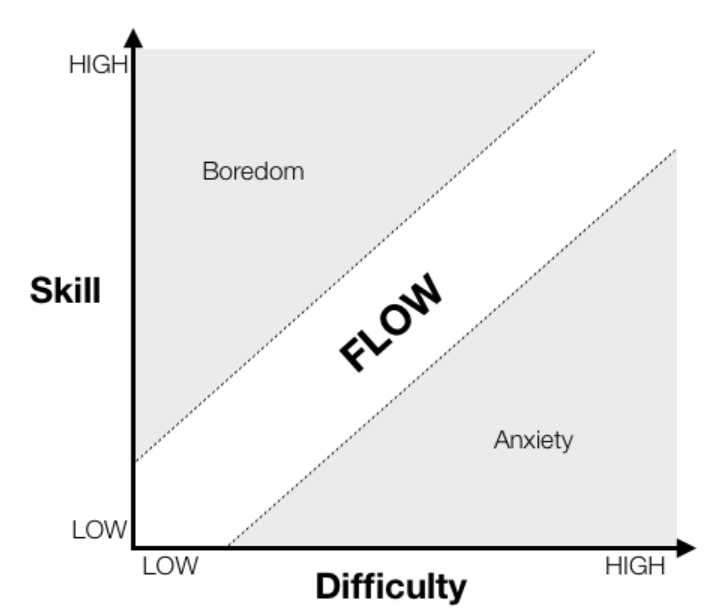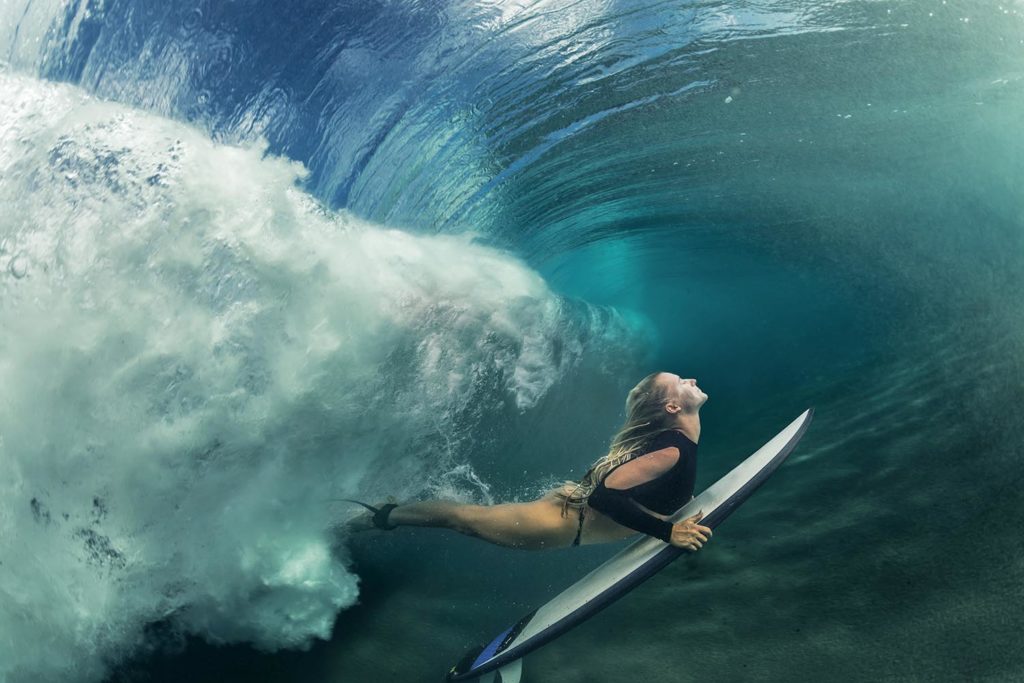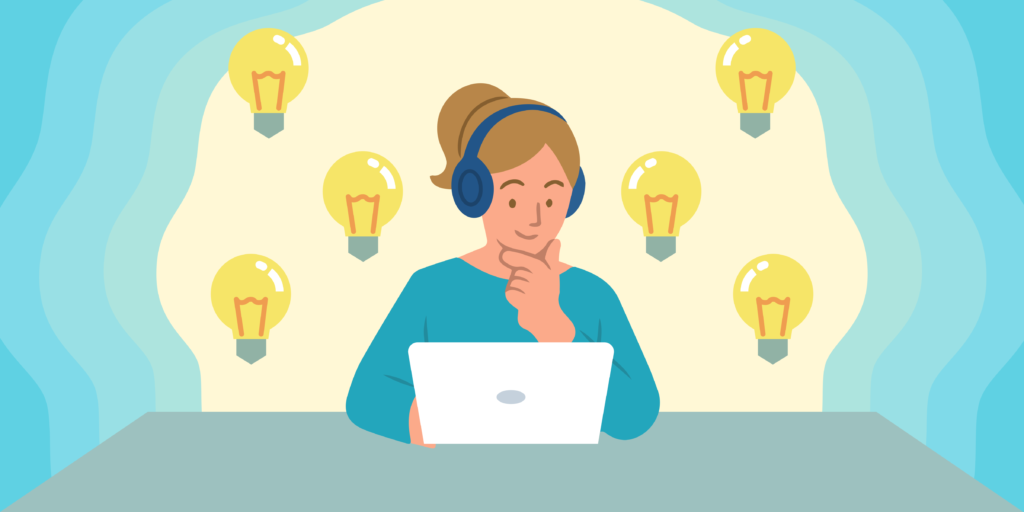
A flow state of mind is when we’re highly focused on one activity beyond the point of distraction. When we harness it, we’re productive and effortlessly creative. We use only a fraction of our potential, and flow opens the doorway for us to access our limitless capacity. However, many people find it challenging to harness a flow state of mind because of the distractions. Find out how to manage them and maintain your focus while creating the right flow conditions. (Estimated reading time: 8 minutes)
“That’s the great secret of creativity. You treat ideas like cats: you make them follow you.”
— Ray Bradbury
My first memorable flow experience was at a live performance. Of course, I experienced it before when I was a kid, playing video games or sketching, but it was only after that initial experience that I could articulate it.
Whether at a concert, dancing to other-worldly beats played by my favorite house DJ, or watching a stunning spectacle conjured up by an illusionist, I knew I was experiencing something special in those moments of immersion.
Many things contribute to these euphoric experiences. The visuals, lighting, positive vibes, music, and story collectively create the energy that pulsates through our bodies.
I’ve found that the experiences that most move us are when performers become wholly immersed in what they’re doing — when they get lost in the moment and allow a higher force to take over and channel through them.
Michael Jackson, who is considered one of the greatest artists of all time, was known for his electrifying performances and creating an emotive experience. When asked about it, he said:
“People ask me how I make music. I tell them I just step into it. It’s like stepping into a river and joining the flow. Every moment in the river has its song.”
Witnessing other people step into the metaphoric river awakens us to the song that flows within. In his book, “The Book of Soul,” spiritual teacher Mark Nepo writes:
“Whenever we encounter unmitigated aliveness, we’re awakened to where it lives in us…While there are skills to learn in order to express, the effort that sustains us is the animation of heart that lets us know our aliveness directly.”
That aliveness can also be found when we harness a flow state of mind by creating the right conditions and eliminating any blocks that prevent it from happening naturally.
What is a flow state of mind, and why does it matter

You may have heard of flow or some variation of it. Phrases like being in the zone, immersion, and deep work allude to this feeling of being completely absorbed.
The formal definition of flow is a state of mind where we’re highly focused on one activity beyond the point of distraction. We experience smooth and optimal performance that often results in our best work in this space.
Neuroscientists have recognized that flow is a distinct mental state. When in a flow state of mind, dopamine is released, causing us to feel relaxed, energized, and optimistic. We also reach an alpha brain state that allows a free flow of information within us, making an activity easier to do.
While our minds are fully engaged in the tasks we’re working on, it frees other parts of our brains to make connections and associations that lead to creative ideas and breakthroughs.
A flow state of mind is accessible to anyone — not just those performing the artistic feats with which it’s commonly associated. Playing tennis, skiing, running, or dancing can induce flow. Even simple day-to-day tasks like gardening and washing dishes can take you there

The late Hungarian-American psychologist Mihaly Csikszentmihalyi, who popularized the study of flow, captured the essence of flow in an interview when he said:
“The ego falls away. Time flies. Every action, movement, and thought follows inevitably from the previous one, like playing jazz. Your whole being is involved, and you’re using your skills to the utmost.”
Flow experiences happen in different ways for different people. The common denominator is that they experience it when doing what they enjoy most and are skilled at. When we harness a flow state of mind, we’re productive and effortlessly creative.
Here are some common signs that you’re in a flow state of mind:
- The mind’s chatter fades away, and you have strong concentration and focus.
- You become less aware of bodily feelings like fatigue, aches, hunger, and pains.
- The task feels intrinsically rewarding, and there’s immediate feedback.
- You have clear, challenging, yet attainable goals.
- You lose self-consciousness and experience serenity.
- You experience a sense of timelessness and lose track of time.
Our best moments in life are not laid back and passive. Instead, they are when we’re actively engaged with life, and our minds are stretched to their limits to accomplish meaningful and worthwhile things. This happens when we’re in flow.
Understanding the two dimensions of flow state

Flow state is both a psychological and spiritual phenomenon. In addition to increasing our happiness and creativity, flow enables peak performance.
All the great innovations and achievements in science, art, and sports have been done by people who repeatedly accessed a flow state of mind for prolonged periods.
Whether it was Michael Jordan leaping up the court for a dunk or Marie Curie examining a test tube in her lab, you can be sure that their genius was ignited during these moments of flow.
In this book, “The Art of Impossible,” author and peak performance expert Steven Kotler provides a blueprint for extreme performance improvement after decoding the secrets of elite performers like artists, athletes, CEOs, and scientists. He writes:
“Our limits are governed by flow’s ability to amplify performance as much as by imagination’s ability to dream up that performance.”
We use only use a fraction of our potential, and flow opens the doorway for us to access the limitless capacity of our minds and bodies.
Flow is also significant in the spiritual realm. In Taoism, life is often depicted as a river that flows along the bends and curves. Flow helps us sense the direction of the current in the river and guides us toward a life of purpose. Going against it and resisting it causes suffering and stunts our progress.
One way to invite flow into our lives is to surrender to a higher power and let go of control. This means releasing the ego’s grip on the outcome of events and listening to deeper wisdom. Our intuition becomes the compass that gives us direction.
My favorite visual of being in flow is the whirling dervishes of the Mevlevi Sufi order from Iran. The dancers whirling and spinning movements are a meditative practice that aims to recreate the flow of the revolution using rhythm, vibration, and harmony. In doing this, the dancers reach an ecstatic state where they commune with universal oneness.
How to harness a flow state of mind

There are two parts to harnessing a flow state of mind: managing distractions and creating the right conditions. Both are equally important, especially when we’re bombarded with distractions like the pings from our smartphones and notification from a 24-hour news cycle.
This non-stop stimulation is something that people who lived before the digital age didn’t have to deal with, making it easier to experience flow naturally. Today, we need to arm ourselves with an additional skillset to have deep and sustained focus.
Managing distraction to achieve a flow state
1. Identify and manage distractions: Take stock of the things within and around you that are distracting and take steps to minimize or eliminate them—for instance, putting your phone away while you work so that you aren’t distracted by the notifications.
2. Eliminate clutter from your schedule: Examine your list of tasks and focus on those related to high-priority goals. Flow is easier to access when we focus on what really matters and get rid of tasks that clutter your schedule.
3. Avoid multitasking: Your brain can only focus on one thing at a time. When you try doing many things at once, you’re forcing your brain to do more than it can. This large cognitive load reduces mental efficiency and causes stress.
4. Catch yourself when your focus slips: If you sense your mind drifting, check-in with yourself and figure out what’s causing you to lose focus. Take a few deep breaths to create space between your thoughts and what you’re working on.
5. Create time blocks: Make different time blocks for deep-focused work and reactive tasks like checking your phone or email. When you create boundaries between both types of activities, it reduces the chance of you getting distracted and out of flow.
Creating the right conditions to achieve flow
1. Have clear, specific goals and a map to get there: Before starting a task, be clear about your outcomes and the approaches you need to reach them. Make sure that it’s measurable and time-bound. While the end goal is important, it’s also important to live in the present moment without worrying too much about your efforts, as this could impede your flow.
2. Engage the right interests and skills: Flow is easier to hit when you’re doing something you like. This is because a flow state of mind is based on intrinsic and extrinsic motivation. You also want to ensure that your skill level is aligned with the challenges of the activity at hand. The challenges should slightly stretch you beyond your present capabilities.
3. Use brain exercises to improve memory: A fit mind is a productive one. Mental exercises that improve memory and increase retention help build the connections needed to hit flow. Crossword puzzles, sudoku, and other games can boost your brain to function at optimal levels.
4. Work during your most productive times: We’re more likely to get into flow when we work at or near our peaks of focus. The times when your concentration and focus are at their best can usually be determined by your circadian rhythm, a natural, internal process that regulates the sleep-wake cycle.
5. Take breaks and meditate: After a certain point, your mind will wander. It’s best to step away when that happens. Give yourself a short break to do deep breathing, take a walk, or drink water. Regular mediation practice is another effective way to improve your focus and give your brain a respite to rest and recalibrate.
6. Be physically active: Plenty of research has shown the benefits of being physically active in improving focus and memory. Being active increases blood flow to the brain, leading to growth in brain cells and making it easier to enter a flow state.
A big part of getting into a flow state is letting go. Like a paraglider that leaps off a cliff and rides the wind, when we let go of control and trust, we’ll be carried by higher forces to places where we can soar.
All my best on your journey,
Seline

Question for you: What do you experience when you are in flow? What are some projects you’ve worked on where flow took your performance to the next level?
Did you like this post? Sign up below, and I’ll send you more awesome posts like this every week

Hey, Seline! This article came at the perfect time for me. I’ve been feeling overwhelmed with my workload, but distractions keep slowing me down. So I needed to find a better way to manage my life and your recommendations are exactly what I needed. Thank you!
You’re welcome, Angela! Glad you found it helpful. 🙂